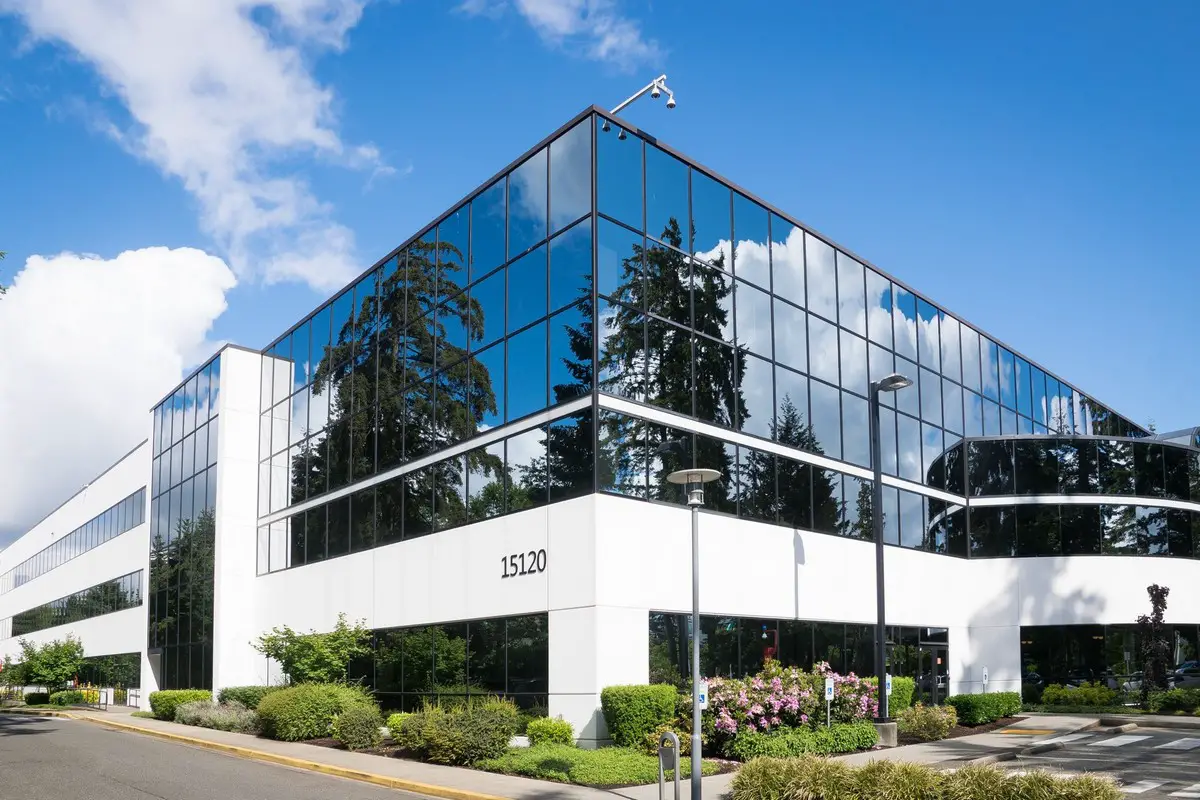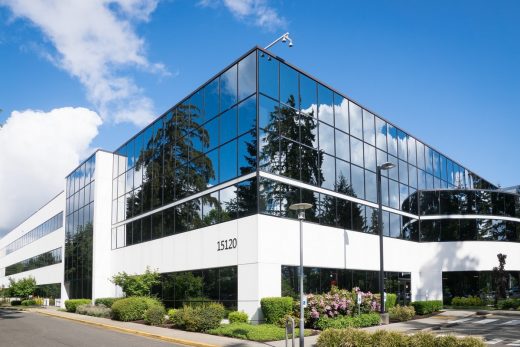Office building safety guide, Property H&S advice, Healthy workspace tips
As workers return to the office, building safety takes centre stage
15 July 2021
After one year of working alongside spouses, children, and pets, setting up makeshift home offices, and juggling career with family responsibilities, UK workers are finally expected to return to the office. According to a recent report, people who are able to work from home are in the minority, and most employees miss the social interaction that took place at the office. The shift already started this month. So far, the hybrid approach is still prevalent, with companies allowing workers to work from home two or three days a week, but experts predict that, at the current pace, companies will return to the full 5-day a week schedule within two years.
However, the mass exodus back to the office may not be as simple as managers initially thought. The buildings that have served the UK’s corporate world for decades are struggling to comply with the new safety standards set by the pandemic. As for the workers, although most of them do miss the atmosphere at the office, there are still concerns that returning could endanger their health.
UK office buildings have followed pretty much the same architectural template for decades, but it’s time for an overhaul. As employees return to the office, building developers, companies, and health experts must work together to create safer workspaces that match the requirements of a post-pandemic lifestyle.
What are the biggest safety concerns in office buildings?
Even though a vaccine is being deployed and the number of daily cases is dropping, employees returning to the office could still be at risk of getting the virus. Social distancing measures do help, but many wonder if the design and layout of the office buildings needlessly increase risk. According to the legal experts at UK Law, employees may seek compensation if they sustained an injury or sickness at the workplace because of the employer’s negligence. Contrary to common belief, injury can occur not only because the employee slipped and fell on a wet floor or was hurt by a heavy object but also because the building didn’t meet safety standards. In this context, it doesn’t come as a surprise that businesses are trying to protect themselves by reconsidering their choice of office space.
Some companies have even gone as far as not to renew their lease and move their offices to smaller buildings or buildings that are better suited for COVID-19 safety protocols.
Among the most pressing safety issues reported in UK office buildings, these are the ones that stood out:
- Poor air quality and ventilation
According to the World Health Organization, proper room ventilation removes stale air and improves air quality, thus reducing the risk of COVID-19 spread. However, many office buildings in the UK do not have enough windows or have insufficient, old, and outdated ventilation systems.
- Not enough access routes
In office buildings rented by multiple businesses, there should be separate access points so that employees interact as little as possible in shared spaces and authorities can trace contacts more easily.
- Lack of green spaces
The UK’s grey skyline is in need of a green overhaul. Green spaces have been scientifically proven to enhance air quality and wellbeing at the office, and yet many buildings offer nothing more than glass and concrete, which trap heat and cause discomfort.
- Too many shared surfaces
Surfaces such as knobs, soap dispensers, and elevator buttons, which are touched by hundreds of people every day, can speed up the spread of diseases.
- Rooms that are either too large or too small
The COVID-19 pandemic has changed the way teams work. If pre-pandemic, most companies would have their teams work in large, open spaces, now these spaces are considered to be too risky from an epidemiological standpoint. Most buildings have smaller offices too, but those are better suited for one or two persons and cannot accommodate a larger team with spaced out furniture.
New trends in office building design
Faced with the risk of commercial tenants cancelling their lease, building developers have understood that new times call for new architectural standards. Wherever possible, they’ve started to adjust the design and layout of the building, but many new buildings are also being built from scratch.
Here are some of the trends that will shape office buildings for years to come, in the UK and not only:
- Instead of porous materials such as wood and cork, which are difficult to clean and favour bacterial growth, developers are using non-porous materials such as tile and aluminium – these are easy to wipe clean, aren’t damaged by heavy-duty cleansers, and bacteria and viruses don’t last long on them.
- Eliminating touch-based amenities as much as possible. Developers are adding sensor-based soap dispensers and light switches so that workers don’t have to touch shared surfaces. Automatic entry systems also allow employees to get inside the building with an app on their floor, without touching anything.
- The post-pandemic office design is getting an upgrade. Large open spaces and meeting rooms are being replaced with smaller, cleverly thought-out areas where teams of up to five people can collaborate. These rooms also feature spaced-out furniture, privacy screens, and transparent shields. Aesthetically speaking, these can be challenging to do because too much protection can make offices look like prisons, so designers have incorporated minimal designs that make the screens seamlessly blend in, and compensated with decorations to create a warm, homely feeling.
- Higher emphasis on air quality. New buildings have bigger windows to allow for natural ventilation, but new ventilation and HVAC systems are also part of the redevelopment of older buildings. New HVAC systems are isolated by floor, so that used air doesn’t circulate throughout the building.
- Incorporating green spaces onto every floor. To improve air quality and allow employees more access to outdoor air, developers are adding terraces on every floor. In addition to improving air quality, this also improves workplace wellness.
Although integrating these trends into building developments can be quite a hefty investment, experts argue that the benefits outweigh the costs and that, in the long run, they will improve workplace wellness and create employee loyalty.
Comments on this guide to Office building safety takes centre stage article are welcome.
Construction Safety
Construction Safety Posts
Construction industry health and safety importance
Why Construction Safety Is Important
Best practices to improve construction site safety
Building Articles
Comments / photos for the Office building safety takes centre stage advice page welcome






